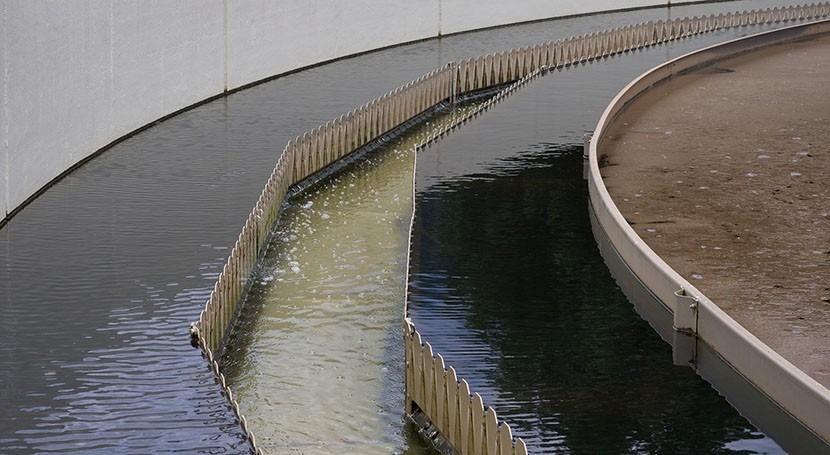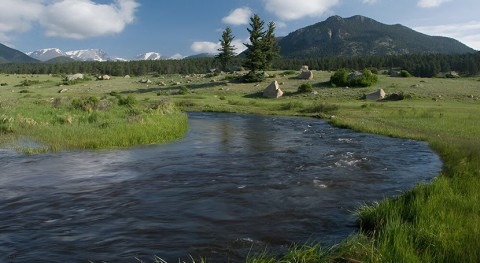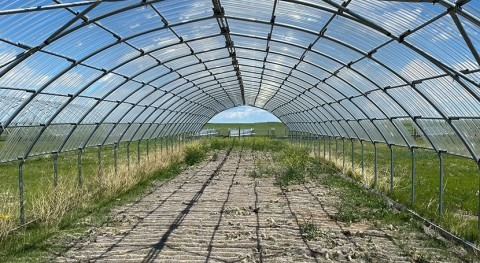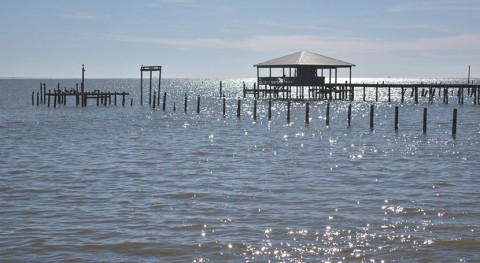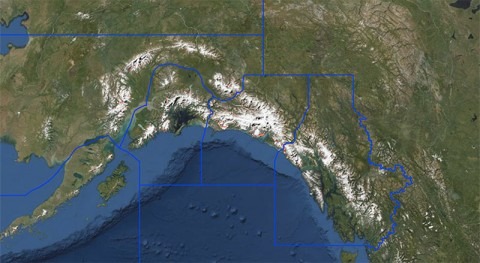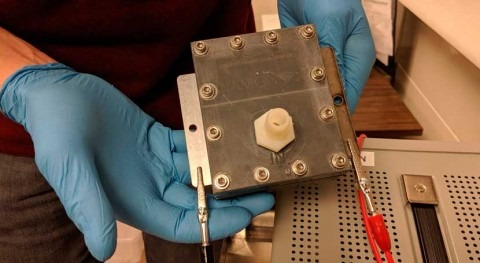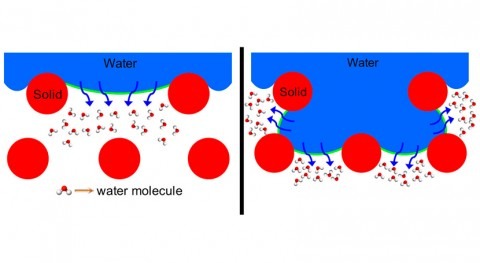Every day, hundreds of billions of gallons of a precious, dwindling natural resource, fresh water, is used for agricultural irrigation, energy extraction and more. The demand for novel sources of clean water, in the face of a growing population and a warming planet, is at crisis levels.
Colorado State University researchers have been given the green light on a research project that could rewrite the book on how spent water from agricultural fields or wastewater facilities are treated and reused, and how valuable commodities could be extracted from those waters. Their goal is to create new, sustainable uses for non-traditional water sources and to disrupt humanity’s reliance on traditional fresh water for crops and other needs.
The CSU team has received a $1.9 million grant from the U.S. Department of Energy’s National Alliance for Water Innovation, a $110 million, multi-institutional network of scientists focused on treatment and reuse technologies for outside-the-box water sources like municipal wastewater, seawater and agricultural drainage. Thomas Borch, professor in the Department of Soil and Crop Sciences with joint appointments in chemistry and civil engineering, is leading the awarded CSU research team and also serves on the leadership team of the national alliance.
A research project that could rewrite the book on how spent water from agricultural fields or wastewater facilities are treated and reused
Reducing demand for water
Borch and the team, which includes researchers from several institutions and an industry partner, will be focused for the next two years on developing and testing low-cost, environmentally benign materials that function as chemical sorbents, similar to sponges, for the precise removal and recovery of certain nutrients – mainly phosphate, ammonium and nitrate – from municipal and agricultural wastewaters. Their testbed will be a working wastewater treatment facility on the Hawaiian island of Maui operated by Washington-based water treatment solutions company WaterTectonics. WaterTectonics’ CEO, Jim Mothersbaugh, will serve as a key research partner in the project.
The benefits of a successful venture would be multi-faceted, the researchers say. Treatment and reuse of wastewater would reduce demand for fresh water across many sectors, including agriculture. The phosphates and other nutrients reclaimed from that water could become valuable, environmentally friendly fertilizers for agricultural fields. What’s more, their work could lead to an overall reduction in the levels of phosphates and nitrates typically left in wastewater and that end up in lakes and oceans. These nutrients feed harmful algae blooms, disrupting delicate ecosystems including fish and aquatic plants.
“The volumes of water we are talking about are just huge,” Borch said. “Agriculture alone is responsible for more than 42% of all fresh water withdrawals in the country. If you want to really make a different with respect to treatment and reuse of water, you will need to focus on either the agriculture or the power sectors.”
What is biochar?
The researchers’ starting sorbent materials of choice will be optimized and chemically tailored biochar and clay, which will be functionalized by the addition of metal oxides and biodegradable polymers. Biochar, commonly known as a soil additive, is a charcoal-like material created by burning carbon-rich biomass – usually wood, wheat straw, corn stalks or manure – in an oxygen-free environment. Its potential as a low-cost material for precision-separation of nutrients from water is being explored by multiple scientists, including the CSU team.
For this project, the team plans to use biosolids waste from the Maui treatment plant as their starting material for making their biochar sorbents. Other members of the research team from University of Cincinnati will work on optimizing clay as a sorbent material.
Jim Ippolito, CSU associate professor in the Department of Soil and Crop Sciences, will work on biochar synthesis and optimization. An expert in turning raw materials – including biosolids generated from sewage treatment facilities – into valuable, nutrient-rich products for agricultural land application, Ippolito will provide key expertise in both making the biochar and fine-tuning its sorbent properties.
Our goal is to create novel materials to do the removal for us, yet capture these nutrients in such a way so they can be reused as a fertilizer source
“The main concept with our proposal is to determine a means by which we can selectively remove even greater amounts of phosphorus and nitrogen from this water,” Ippolito said. “It’s relatively difficult to remove both of these simultaneously from the water column. Our goal is to create novel materials to do the removal for us, yet capture these nutrients in such a way so they can be reused as a fertilizer source.”
The Maui plant has a pyrolysis unit under construction for the conversion of biosolids to biochar. Their intent is to use the manufactured biochar as a nutrient removal sponge for the wastewater. The nutrient-loaded biochar will then be used for agricultural applications in Maui, for which there is high demand. Conversion of municipal biosolids to biochar will reduce the cost of biosolids management while also assisting the facility’s sustainability goals and reducing its carbon footprint.
The CSU team will work with WaterTectonics and the local operator of the plant to make the biochar, characterize its chemical structure, and develop a sustainable solution for the recovery of nutrients from the plant’s waste.
“We are tapping directly into work that is ongoing, but will be responsible for development of advanced sorbent materials for selective removal of nutrients with WaterTectonics,” Borch said.
A critical focus of the project is scalability and economic viability, which is why the researchers are choosing simpler materials like clay and biochar, rather than more exotic, rare materials. “Exotic materials might work better as sorbents, but they would be prohibitively expensive and serve only as an academic exercise,” Borch said.
Other partners
Other partners on the grant are researchers at the National Renewable Energy Laboratory who will conduct environmental impact analysis and help the team compare varied materials with more traditional forms of wastewater treatment and reuse. The team also includes researchers from the Environmental Protection Agency and the University of Hawaii at Manoa.
To perform high-resolution molecular characterization of their unique biochars and clays, the team will also partner with scientists at the National High Magnetic Field Laboratory at Florida State University, the Lawrence Berkeley National Laboratory, and the Stanford Synchrotron Radiation Lightsource.


